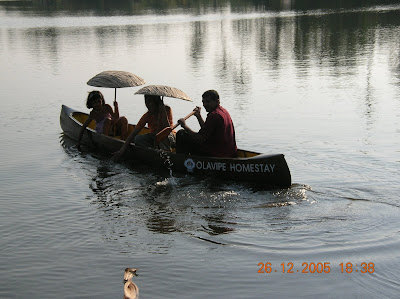 (INTACH Post Card)
(INTACH Post Card)
Beautiful, isn’t it?
These are the historic twin churches at Ramapuram, one of the cradles of Christianity in Kerala, India. The smaller of these, in the name of St. Augustine, was built around 1450, and the other in 1864. These monuments may be razed to the ground soon. What no invader, no government, no other community, have dared to try, is being done with abandon by the Church itself.
Aisanet TV reported last evening that a referendum is being conducted among the parishioners of Ramapuram on Sunday, April 29, 2007 about demolishing these famous shrines. The Church officials have taken a strong stand in favor of the destruction. Therefore the outcome of the vote is a foregone conclusion. The priests do not seem to be worried whether such actions and procedures conform to the laws of the country.
The move to demolish the twin churches and build a ‘modern’ one in their place has been on for some time. The Hindu carried a report about this on February 18, 2005. The reason given for this proposal by the Vicar was that more space is required to accommodate the increased number of pilgrims! Apparently he was not alert to the fact that the newer of the two churches was also built for the same reason, but people who were responsible then had ensured that the old one was preserved.
The vicar went on to give a piece of wisdom to the world: “God created the whole world for man. Archaeology is for the benefit of man and not vice-versa''. Shades of Benito Mussolini! Il Duce was reported to have said when his car knocked down and killed a boy, “What is the life of a child in the matters of state?”
The Syro-Malabar Church of Kerala, under which Ramapuram comes, is the second largest (after Roman /Latin) Rite in the Catholic Diaspora. It is headed by a Major Archbishop who is a Cardinal. Can the authorities of the Syro-Malabar wash off the responsibility for the demolition mania? There is something called acts of omission and commission.
What about the Pope?
In the recent Apostolic Exhortation, ‘Sacramentum Caritatis’, the Pontiff states, "A solid knowledge of the history of sacred art can be advantageous for those responsible for commissioning artists and architects to create works of art for the liturgy. Consequently, it is essential that the education of Seminarians and priests include the study of art history, with special reference to sacred buildings..."
[The response of some priests in Kerala to this might be, ‘Oh, it’s about some paintings in Europe’, like Stalin who once asked during WW II, ‘How many Divisions does the Pope have?’ In Kerala itself, invaluable frescos were lost by recent demolition of Thycattussarry Church. See my post ‘Historic church is no more’ by clicking on the title]
Indiscriminate destruction of heritage structures should be a matter of concern not only for Christians, but also for others. If you agree, please email this to as many people as you can. The procedure is very simple. Just click on the ‘envelope’ icon below and give the email IDs.
Let us preserve our heritage.
Ends.



























